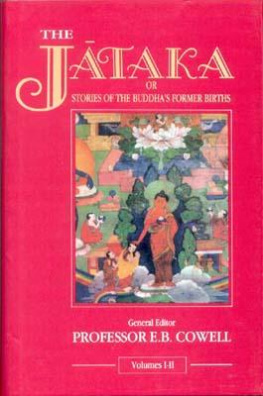First published in 1882 by
Trbner & Co Ltd
Reprinted in 2000, 2002 by
Routledge
2 Park Square, Milton Park, Abingdon, Oxon, OX14 4RN
Transferred to Digital Printing 2007
Routledge is an imprint of the Taylor & Francis Group
1882 E B Cowell and A E Gough
All rights reserved. No part of this book may be reprinted or reproduced or utilized in any form or by any electronic, mechanical, or other means, now known or hereafter invented, including photocopying and recording, or in any information storage or retrieval system, without permission in writing from the publishers.
The publishers have made every effort to contact authors/copyright holders of the works reprinted in Trbner's Oriental Series. This has not been possible in every case, however, and we would welcome correspondence from those individuals/companies we have been unable to trace.
These reprints are taken from original copies of each book. In many cases the condition of these originals is not perfect. The publisher has gone to great lengths to ensure the quality of these reprints, but wishes to point out that certain characteristics of the original copies will, of necessity, be apparent in reprints thereof.
British Library Cataloguing in Publication Data
A CIP catalogue record for this book
is available from the British Library
The Sarva-Darana-Sagraha
ISBN 0-415-24517-6
India: Religion and Philosophy: 10 Volumes
ISBN 0-415-24291-6
Trbners Oriental Series
ISBN 0-415-23188-4
ISBN 978-1-136-38924-5 (ePub)
PREFACE.

I WELL remember the interest excited among the learned Hindus of Calcutta by the publication of the Sarva-darana-samgraha of Mdhava chrya in the Bibliotheca Indica in 1858. It was originally edited by Pait varachandra Vidysgara, but a subsequent edition, with no important alterations, was published in 1872 by Pait Trntha Tarkavchaspati. The work had been used by Wilson in his Sketch of the Religious Sects of the Hindus (first published in the Asiatic Researches, vol. xvi., Calcutta, 1828); but it does not appear to have been ever much known in India. MS. copies of it are very scarce; and those found in the North of India, as far as I have had an opportunity of examining them, seem to be all derived from one copy, brought originally from the South, and therefore written in the Telugu character. Certain mistakes are found in all alike, and probably arose from some illegible readings in the old Telugu original. I have noticed the same thing in the Ngar copies of Mdhavas Commentary on the Black Yajur Veda, which are current in the North of India.
As I was at that time the Oriental Secretary of the Bengal Asiatic Society, I was naturally attracted to the book; and I subsequently read it with my friend Pait Maheachandra Nyyaratna, the present Principal of the Sanskrit College at Calcutta. I always hoped to translate it into English; but I was continually prevented by other engagements while I remained in India. Soon after my return to England, I tried to carry out my intention; but I found that several chapters, to which I had not paid the same attention as to the rest, were too difficult to be translated in England, where I could no longer enjoy the advantage of reference to my old friends the Paits of the Sanskrit College. In despair I laid my translation aside for years, until I happened to learn that my friend,. Mr. A. E. Gough, at that time a Professor in the Sanskrit College at Benares, was thinking of translating the book. I at once proposed to him that we should do it together, and he kindly consented to my proposal; and we accordingly each undertook certain chapters of the work. He had the advantage of the help of some of the Paits of Benares, especially of Pait Rma Mira, the assistant Professor of Skhya, who was himself a Rmnuja; and I trust that, though we have doubtless left some things unexplained or explained wrongly, we may have been able to throw light on many of the dark sayings with which the original abounds. Our translations were originally published at intervals in the Benares Pait between 1874 and 1878; but they have been carefully revised for their present republication.
The work itself is an interesting specimen of Hindu critical ability. The author successively passes in review
The systems are arranged from the Vednta point of view,our author having been elected, in A.D. 1331, the head of the Smrta order in the Mah of ingeri in the Mysore territory, founded by akara chrya, the great Vedntist teacher of the eighth century, through whose efforts the Vednta became what it is at presentthe acknowledged view of Hindu orthodoxy. The systems form a gradually ascending scale,the first, the Chrvka and Bauddha, being the lowest as the furthest removed from the Vednta, and the last, the Skhya and Yoga, being the highest as approaching most nearly to it.
The sixteen systems here discussed attracted to their study the noblest minds in India throughout the medival period of its history. Hiouen Thsang says of the schools in his day: Les coles philosophiques sont constamment en lutte, et le bruit de leurs discussions passionnes slve comme les flots de la mer. Les hrtiques des diverses sectes sattachent des matres particuliers, et, par des voies diffrentes, marchent tous au mme but. We can still catch some faint echo of the din as we read the medival literature. Thus, for instance, when King Harsha wanders among the Vindhya forests, he finds seated on the rocks and reclining under the trees rhata begging monks, vetapadas, Mahpupatas, Parabhikshus, Bhgavatas, Varins, Kealuchanas, Lokyatikas, Kpilas, Kdas, Aupanishadas, svarakrins, Dharmastrins, Paurikas, Sptatantavas, bdas, Pchartrikas, &c., all listening to their own accepted tenets and zealously defending them. Many of these sects will occupy us in the ensuing pages; many of them also are found in Mdhavas poem on the controversial triumphs of akara chrya, and in the spurious prose work on the same subject, ascribed to Anantnandagiri. Well may some old poet have put into the mouth of Yudhishhira the lines which one so often hears from the lips of modern paits
Ved vibhinn smitayo vibhinn,
Nsau munir yasya mata na bhinnam,
Dharmasya tattva nihita guhy,
Mahjano yena gata sa panth.
And may we not also say with Clement of Alexandria,












